Part 1 of 2 Parts
The pursuit of nuclear fusion as a clean, sustainable energy source is one of the most challenging scientific and engineering goals of our time. Commercial fusion power promises nearly limitless energy without carbon emissions or long-living radioactive waste.
However, achieving practical fusion power requires solving significant challenges. These challenges come from the heat generated by the fusion process, the radiation produced, the progressive damage to materials used in fusion reactors, and other engineering problems. Fusion systems operate under extreme physical conditions, and they generate data at scales that surpass the ability of humans to analyze.
Nuclear fusion is the process that powers our Sun and other stars. Existing commercial nuclear power relies on a process called fission, where a heavy chemical element nucleus is split to produce lighter ones. Nuclear fusion works by combining the nuclei of two light elements to make a heavier one.
While physicists have been able to initiate and sustain fusion for short periods of time, getting more energy out of the process than the energy supplied to power the fusion device has been a serious challenge. So far, this has prevented the commercialization of this hugely promising energy source.
Artificial intelligence (AI) is emerging as a powerful and critical tool for managing the challenges of fusion research. It holds promise for dealing with the complex data and convoluted relationships between different aspects of the fusion process. This development not only enhances our understanding of fusion but also accelerates the development of new reactor designs.
By addressing these challenges, AI offers the potential to significantly compress timelines for the development of fusion reactors. It will pave the way for the commercialization of nuclear fusion.
AI is reshaping fusion research across academic, government, and commercial sectors which is driving innovation and progress toward a sustainable energy future. It can play a transformative role in addressing the challenges of developing materials for fusion reactors. These new materials must be able to withstand extreme thermal and neutron environments while maintaining structural integrity and functionality.
By connecting datasets from different experiments, simulations, and manufacturing processes, AI models can generate predictions and insights that can be acted on. Machine learning is a form of AI that can significantly accelerate the evaluation and optimization of materials that could be used in fusion reactors.
These include the doughnut-shaped fusion reactors called tokamaks used in magnetic confinement fusion (where magnetic coils are used to guide and control hot plasma, allowing fusion reactions to occur). The extremely hot plasma can damage the materials used in the interior walls of the tokamak, as well as irradiating them.
Machine learning involves the use of algorithms (a set of mathematical rules) that can learn from experimental data and apply those lessons to unseen problems. Insights from this form of AI are extremely critical for guiding the selection and validation of materials able to endure the harsh conditions inside fusion reactors. AI has allowed scientists to develop detailed simulations that permit the rapid evaluation of materials performance and their configurations within a fusion reactor. This approach helps ensure long-term reliability and cost efficiency.
Fusion Reaction
Please read Part 2 next
Blog
-
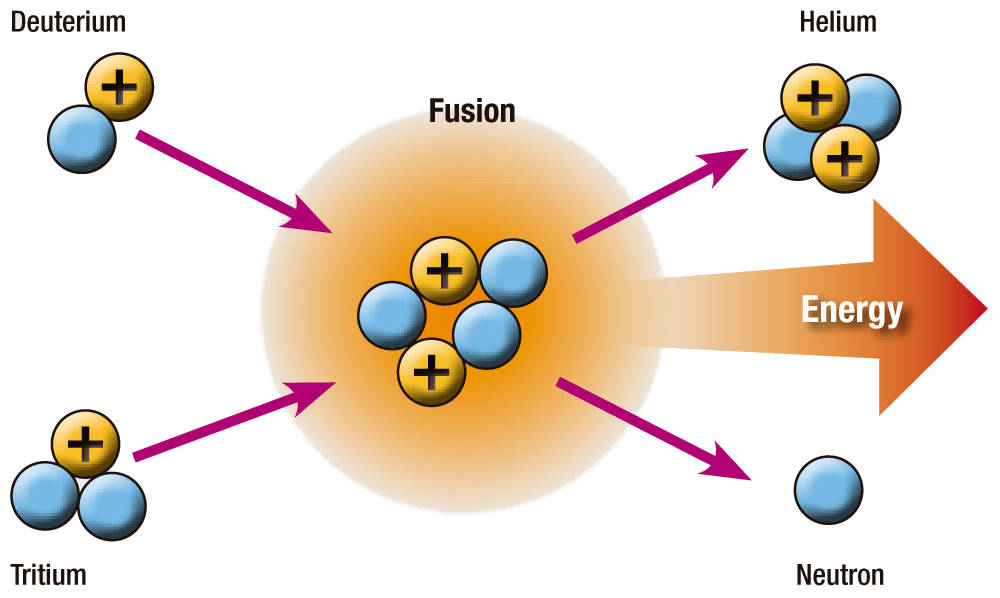
Nuclear Fusion 108 – Artificial Intelligence And Nuclear Fusion – Part 1 of 2 Parts
-
Nuclear News Roundup Jan 30, 2025
NYSERDA starting to explore advanced nuclear development spectrumocalnews.com
ACU NUCLEAR SALT REACTOR: Tackling water & energy issues while advancing cancer treatment bigcountryhomepage.com
Energy expert advocates Small Modular Nuclear Reactors for Thailand nationthailand.com
U.S., Israel risk catastrophe with any attack on Iran’s nuclear facilities: Araghchi tehrantimes.com
-

Geiger Readings for Jan 30, 2025
Ambient office = 58 nanosieverts per hour
Ambient outside = 125 nanosieverts per hour
Soil exposed to rain water = 125 nanosieverts per hour
Purple onion from Central Market = 73 nanosieverts per hour
Tap water = 100 nanosieverts per hour
Filter water = 87 nanosieverts per hour
-

Nuclear Reactors 1472 – Australian Political Parties Disagree About The Need For Nuclear Power – Part 2 of 2 Parts
Part 2 of 2 Parts (Please read Part 1 first)
Other Australians at COP29 say it is important not to overstate nuclear’s presence, and its place in the global net-zero carbon effort.
Tennant Reed is the Director of Climate Change and Energy at the Ai Group, and he is a veteran of COP climate summits. He said the arrival of nuclear energy in the climate change scene had certainly been noticeable.
Reed added, “When I was at the 2018 climate summit in Poland, there was something of a fuss and surprise when a person in a giant inflatable polar bear costume burst into the cafeteria, accompanied by pro-nuclear youth and an opera singer singing pro-nuclear songs. That was very unusual but there’s a lot more visibility for the nuclear power industry, and nuclear advocates, in the trade show element of these conferences these days.” He continued that growth in nuclear power wasn’t a feature of the main negotiations at Baku, but neither was scaling up any other particular energy source.”
Reed went on to say that nuclear advocates were hosting events on the sidelines, and they were very sensitive to one criticism in particular. He said, “They’re all conscious that they have to show that they can deliver new projects ‘on time and on budget’. I must have heard that phrase fifty times from nuclear people.”
Reed added, “I think that they’re conscious that this is an ambition that the last wave of nuclear development in Western countries certainly did not meet. But they are very focused on making sure that this time is different.”
The IAEA is forecasting a few big decades for nuclear power, expecting global production to more than double by 2050. However, Reed said much of the growth in nuclear power was coming from countries with established industries. While other countries were expressing interest in setting up an industry, few had recently broken ground. He said there was a much more momentum in the roll-out of renewables. He added that “Wind and solar deployment, and especially solar at the moment, is taking off like a rocket. It took the world a very long time to deploy its first total terawatt of solar energy production. We are now doubling every couple of years. And so there’s a vast amount of on-the-ground deployment of wind and solar that is happening.”
Some conservation groups have tried to push back on the rising prominence of nuclear power, seeing it as a threatening distraction in efforts to combat climate change. The Australian Conservation Foundation’s (ACF) Dave Sweeney attended the COP29 conference in Baku. He cast some doubt on nuclear’s future, at least compared to renewables. Sweeney said, “It’s one thing to have agreements and aspirations, it’s another to have projects and power. The industry is having some very good rhetoric, but it’s having a very poor reality. We’ve seen thirty countries say that they will triple nuclear (power) by 2050; we’ve seen one hundred and twenty-five say that they will triple renewables by 2045.”
Sweeney argues that part of the nuclear industry’s ambition is attracting public funding, in an effort to “de-risk” its projects. He added, “At meeting after meeting, they’ve spoken about the need for market reforms to de-risk nuclear projects. I think that is very bold code for ‘no-one wants to fund us, so we’re looking for the public purse’.” -
Nuclear News Roundup Jan 29, 2025
Potential nuclear waste sites identified bbc.com
NextEra initiates regulatory process to restart Duane Arnold world-nuclear-news.org
Minnesota lawmakers revisit efforts to lift state’s nuclear moratorium echopress.com
Westinghouse Awarded Contract to Evaluate Deployment of AP1000® Reactor in Slovenia westinghousenuclear.com
-
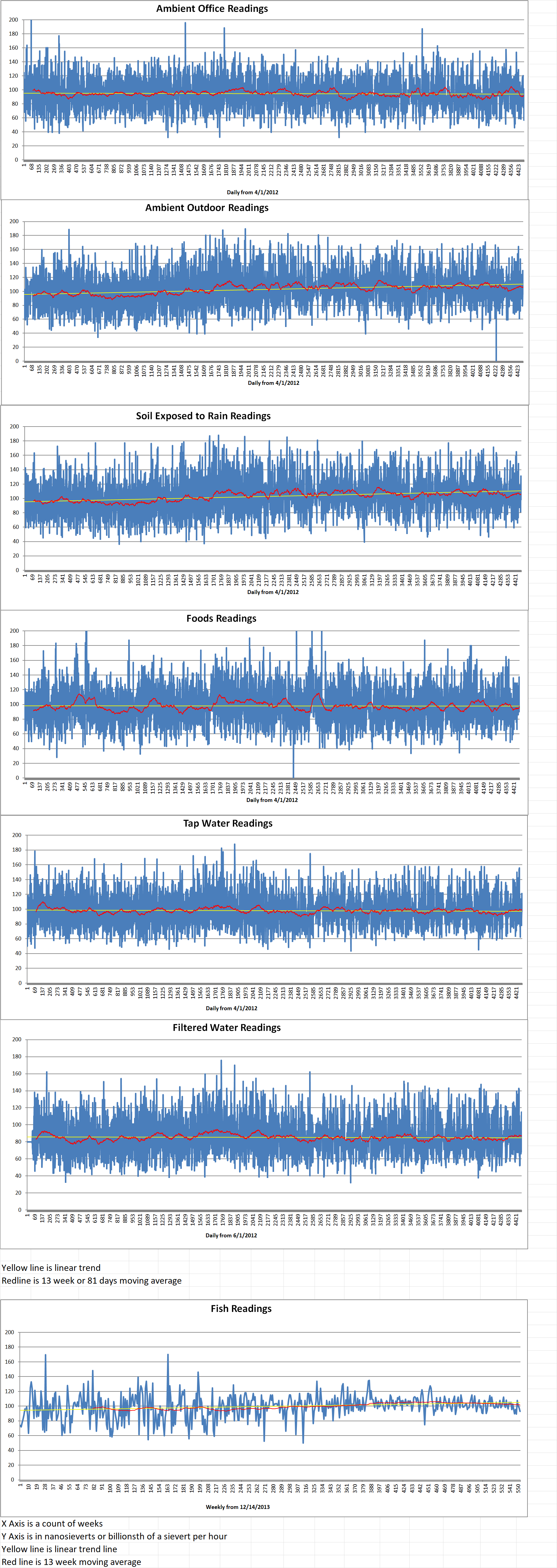
Geiger Readings for Jan 29, 2025
Ambient office = 57 nanosieverts per hour
Ambient outside = 106 nanosieverts per hour
Soil exposed to rain water = 105 nanosieverts per hour
Roma tomato from Central Market = 108 nanosieverts per hour
Tap water = 97 nanosieverts per hour
Filter water = 81 nanosieverts per hour
-
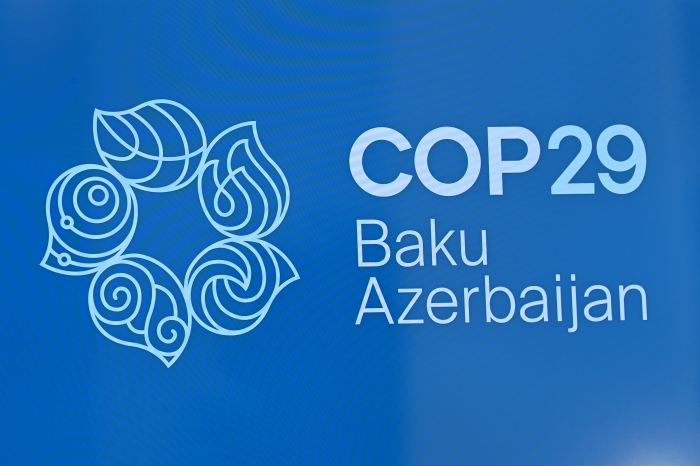
Nuclear Reactors 1471 – Australian Political Parties Disagree About The Need For Nuclear Power – Part 1 of 2 Parts
Part 1 of 2 Parts
Nuclear’s share as part of the global energy mix has been falling for the past few decades, and incidents like the Fukushima disaster in 2011 highlighted for many the risks of the technology. Some countries started mothballing or shutting down nuclear power plants, and many new projects have been plagued by cost overruns and construction delays. However, in the past few years there has been a remarkable turnaround.
Countries are pledging to triple the production of nuclear power globally. Industry advocates are a growing presence at global climate summits. The International Atomic Energy Agency (IAEA) is a United Nations body that advocates for peaceful use of nuclear technology. It is forecasting substantial growth in the nuclear power sector over the coming decades.
Australia is heading into a federal election with the adoption of nuclear power at the center of the political contest. The Liberal-National Coalition (LNP) argues that Australia risks being left behind if it doesn’t get on board with nuclear power.
Others point out that while there is plenty of global interest in nuclear power and the as-yet unrealized promise of new technology such as small modular reactors (SMRs), there is a lot more money flowing into renewable energy sources, which are already transforming global energy grids.
The U.N. Climate Change Conference (COP29) climate summit held in Baku, Azerbaijan late last year was dedicated to climate financing. It was focused on finding the money needed to fund a massive global effort to tackle climate change.
COP29 made headlines for a few different reasons. One reason was that for the second year running, the global climate summit was being held in a country that derives most of its income from oil and gas. Last year’s climate summit was held in the UAE.
Another reason was the growing presence of nuclear power. Six more countries have signed a pledge to triple nuclear’s global production by 2050, taking the total number of countries on board to thirty-one.
These countries range from relatively small countries such as Moldova, to major Australian allies like Canada, Japan, the UK and US. All four of those larger countries have long-established nuclear power industries.
Nuclear power attracted plenty of attention at COP29, including headlines labelling it a “rising star” at the climate summit.
David Gillespie is the retiring Nationalist Party (NP) MP for the NSW North Coast seat of Lyne. He travelled to the summit (with some backing from Coalition-aligned environment group Coalition for Conservation). Gillespie has been one of nuclear power’s longest and loudest supporters in Australia, chairing the “parliamentary friends of nuclear industries”. He acknowledges that a large part of COP29 was devoted to renewable energy, and a lot of money and ambition is flowing into solar and wind. However, he said that the shift in thinking on nuclear power at a global scale was clear to see.
Gillespie said, “The world — and climate summits — for the first twenty-five years ignored nuclear. People have worked out, they realize for us to reduce our world’s requirement for fossil fuels, for industry, for running cities, for running sovereign energy systems that are not weather dependent — the way to go is nuclear. You build a fleet (of power plants), you don’t tip your toe around the edges.” He said the message he took from the climate summit was go nuclear, and go big. You do what France, and what Canada, and what America did in the 80s, you build a lot of them. And then you’ve got a grid that’s resilient and clean.”Please read Part 2 next -
Nuclear News Roundup Jan 28, 2025
HCTC to launch Kentucky’s only nuclear medicine program hazard-herald.com
Hinkley Point C owner warns fish protection row may further delay nuclear plant theguardian.com
Landmark agreement clears way for restart of uranium transport world-nuclear-news.org
-
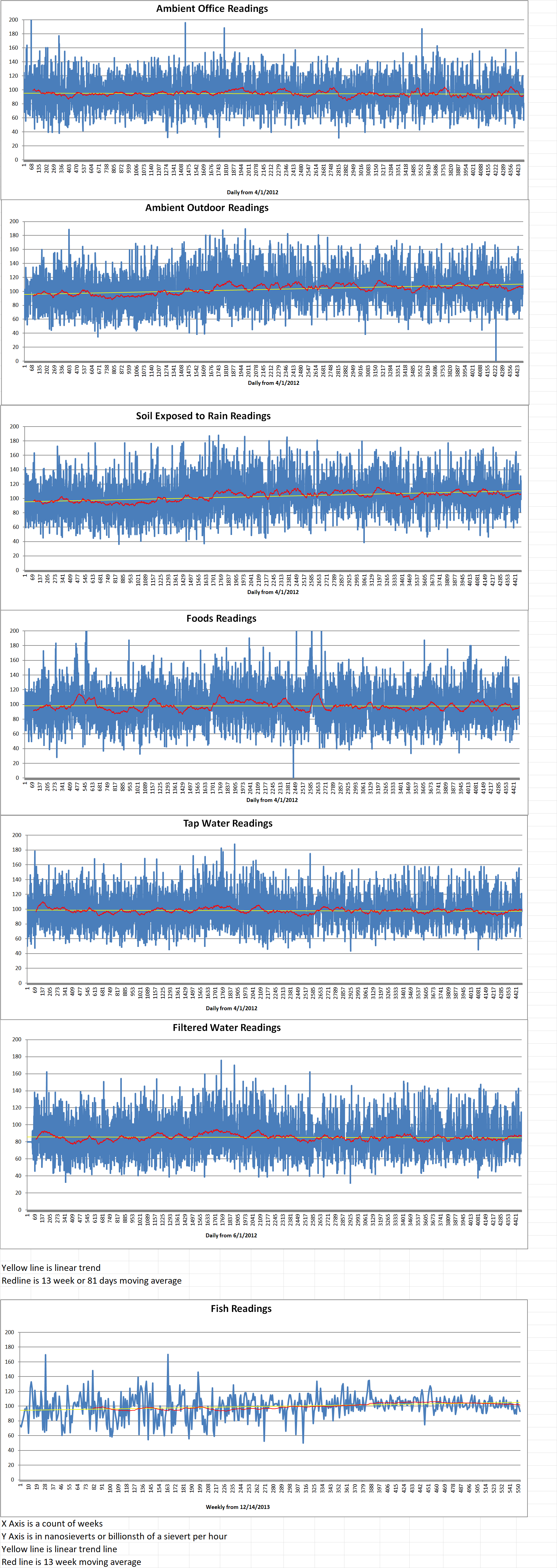
Geiger Readings for Jan 28, 2025
Ambient office = 81 nanosieverts per hour
Ambient outside = 97 nanosieverts per hour
Soil exposed to rain water = 99 nanosieverts per hour
Polenta from Central Market = 109 nanosieverts per hour
Tap water = 102 nanosieverts per hour
Filter water = 85 nanosieverts per hour
-
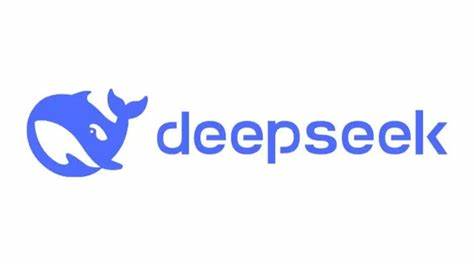
Nuclear Reactors 1470 – Chinese DeepSeek Chatbot Roils Stock Market For Chip Makers And Nuclear Industry
S&P 500 nuclear power giants Constellation Energy (CEG) and Vistra (VST) stock plummeted Monday as China’s private DeepSeek startup shook the global markets. DeepSeek has just released a powerful artificial intelligence program that it claims costs just five billion six hundred million dollars to build. This marks a possible paradigm shift from the current massive levels of investment by technology industry giants in energy and AI infrastructure.
Nuclear stocks fell Monday during market action, marking a reverse of fortunes compared to last week. The sector had advanced after President Trump announced Tuesday afternoon that Sam Altman’s OpenAI, SoftBank and Oracle (ORCL) are planning a joint venture called Stargate. This collaboration is intended to build data centers and other AI infrastructure in the U.S., with investments of up to five hundred billion dollars.
Data centers are needed to “train” AI learning models. They are expected to increase demand for electricity through the coming decade. Big Tech companies have looked to nuclear power, as well as natural gas, to answer the demand surge. However, the concern about China’s DeepSeek is that the massive investment is not necessarily needed for a capable AI model.S&P 500 companies CEG and VST sank twenty two percent and twenty eight percent respectively on Monday. These nuclear giants, who were two of the top three S&P 500 performers in January going into Monday’s trade, had jumped more than nine percent last week. CEG and VST began Monday trade extended above traditional buy points, according to MarketSurge chart analysis.
Along with CEG and VST, Talen Energy (TLN) sank twenty-two percent. Talen Energy signed a six hundred and fifty million dollars deal last March with Amazon.com (AMZN) for a nuclear-powered data center campus.
Meanwhile, small modular reactor (SMR) focused companies signaled significant declines after huge gains last week. The nuclear industry segment so far has offered no operational advanced nuclear projects. However, several companies are moving ahead with SMR technology.
Oklo (OKLO) is the nuclear power startup backed by Sam Altman from OpenAI. It slid twenty-six percent on Monday. OKLO stock soared sixty percent last week, surging past a traditional twenty-eight buy point, the high from October 30th, from a nine-week cup base. The stock began Monday up nearly ninety percent in January. However, the OKLO stock is very volatile and has swung above and below that twenty-eight entry in broad moves.Fellow SMR-focused stock Nano Nuclear Energy (NNE) dropped twenty six percent on Monday after an eighty percent advance last week. NuScale Power (SMR) dipped twenty eight percent on Monday. That stock booked a twenty-seven percent gain last week.
GE Vernova (GEV) has been experiencing demand for its natural gas turbines for data centers. It declined around twenty-two percent on Monday.
Meanwhile, Entergy (ETR), one of the largest U.S. utilities, dipped four and a half percent on Monday. Last December, Entergy was chosen by Meta Platforms (META) to help power its planned ten-billion-dollar AI data center in northeast Louisiana.
AI data center-adjacent stocks also dropped on Monday. Powell Industries (POWL) fell sixteen percent while Modine Manufacturing (MOD) declined twenty six percent. Comfort Systems USA (FIX) sank twenty-five percent and Vertiv Holdings (VRT) fell around thirty percent.
Constellation Energy stock has a ninety-four Composite Rating out of a best-possible ninety-nine. The S&P 500 stock also has a ninety-seven Relative Strength Rating and a fifty-four EPS Rating.
